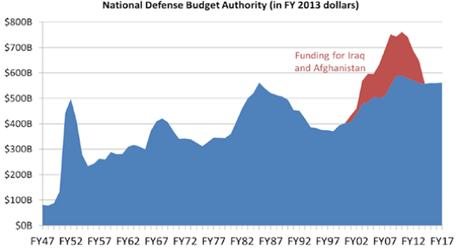If I recall correctly this was/is a ‘monetarist’ shop? Nice to see them recognizing the role of fiscal policy to this extent.
Why Over 8% Unemployment Could Lie Ahead
By Matt Clinch
Feb 18 (CNBC) — Severe fiscal tightening in the U.S. will lead to no growth or a contraction in the first two quarters of 2013 and will push unemployment over the 8 percent level, according to Lombard Street Research.
The knock-on effect will mean pain for the business sector, with corporate profits falling after a hit to consumer spending power, the firm said.
“Our view that unemployment could rise above 8 percent and that profits will be squeezed reflects a forecast of nil to negative 2013 (first quarter) growth, and further stagnation in (the second quarter),” a Lombard Street report released on Friday said.
The view contrasts sharply with that of other analysts who are considerably more bullish on the U.S. economy.
Keith McCullough, CEO of Hedgeye Risk Management told CNBC last week that he thinks employment could actually improve below 7 percent by the fourth quarter, adding that from a housing and employment perspective U.S growth is “pretty solid”.
Lombard Street does not agree.
At the start of the year, the payroll tax that funds Social Security was raised two percentage points to its 2010 level of 6.2 percent. This was the largest component of tax increases approved by Congress in the resolution to the “fiscal cliff”.
Retail sales rose 0.1 percent in January, data released by the Commerce Department showed on Wednesday. These two events together should set alarms bells ringing as tax increases suggest a slowdown in the pace of consumer spending, Lombard Street said.
“Retail sales data encouraged the idea that the payroll tax hike from 4.2 percent to 6.2 percent, worth 1 percent of personal disposable incomes, would pass off with little impact. But the effect of the payroll tax was only partly in January,” it said, indicating that only a modest impact would have been expected for January.
Monetary easing by the Federal Reserve provides few offsets to this drop in demand outside of the housing sector, according to Lombard Street.
“The contribution of housing growth to GDP (gross domestic product) has been about 0.4 percent and promises to continue; that of government spending has averaged -0.4 percent for the past three years, and could easily exceed this in (the first and second quarter),” it said.
This -0.4 percent contribution that the research firm cite is set to be complicated further with extra spending cuts after the “fiscal cliff” resolution and the sequestration – a deadline for automatic government spending cuts – due to kick in on March 1.
“Our assumption is that the sequestration is canceled in favor of further cuts in a new provision. But this means the contribution from public spending to GDP growth could well be more negative than the past -0.4 percent,” Lombard said.
“In February the full effect of the payroll tax hike will be reflected in disposable income, and the initial savings “cushion” is likely to give way, so real consumer spending could be down.”
This real consumer spending could be down by more than 2 percent (annualized), it said, with little recovery in March. Thus for the first quarter a dip of 1.5 percent on an annual rate should be expected, contributing -0.1 to GDP growth.
Inventory building and capital expenditure could prove positive factors on that figure, hence its forecasts that GDP could be flat to slightly down for the first quarter and remain stagnant for the second quarter. Along with the last quarter being negative, three straight quarters of zero growth will lead to a rise in the unemployment rate, the firm said.
“Given underlying labor force growth of about 1 percent, this would add 0.7-0.8 percent to the unemployment rate, which was 7.9 percent in January. Even a less pessimistic view of (first quarter) and (second quarter) would send unemployment over 8 percent,” it said.
The chief risk to the stock market is that a reduction of the budget deficit is likely to be offset largely by cuts in the business sector’s surplus, Lombard said, meaning a hit to corporate profits.
However, this might be considered to be a contrarian view with some seeing U.S. growth stabilizing in 2013.
Fed chief Bernanke has previously said that interest rates will be kept low until the unemployment rate reaches 6.5 percent. At the current rate of 150,000 jobs created every month, and 110,000 new entrants to the labor force, that will be around January 2017.

